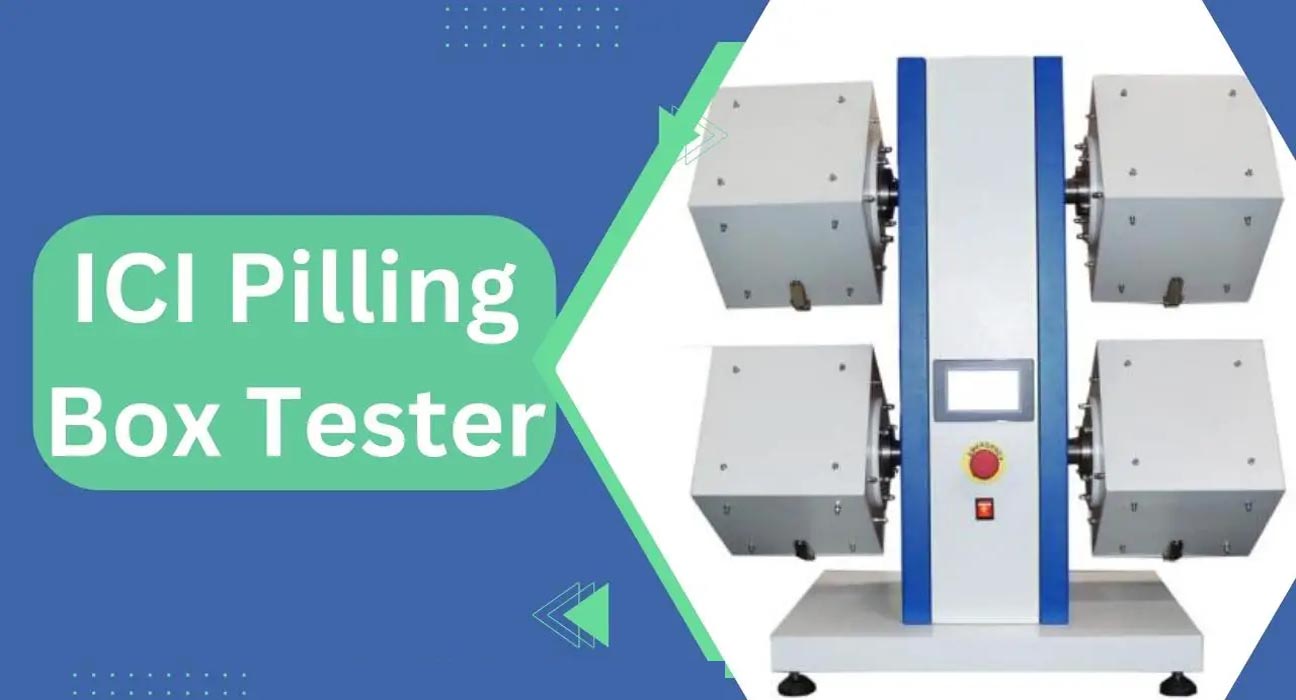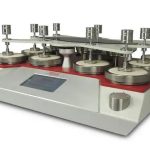Study on ICI Pilling Box Tester Lab Report .
Pilling is the formation of little balls of fibers (pills) on the surface of a fabric which is caused by abrasion in wear. Pilling is the tendency of fibers to come loose from a fabric surface and form balled particles of fiber. These fibers are formed during wearing or washing by the entanglement of the loose fibers.
Objectives:
In this experiment, we’ll work forward
➢To know about the use of this machine.
➢To know about how pills form on fabric.
➢To examine pilling rating.
ICI Pilling Box Tester Lab Report
Working Principle
For this test four specimens, each 5 inch X 5 inch are cut from the fabric.
A seam allowance of 12mm is marked on the back of each square. In two of the samples, the seam is marked parallel to the warp direction and in the other two parallel to the weft direction.
The samples are then folded face to face and a seam is sewn on the marked line.

This gives two specimens with the seam parallel to the warp and two with the seam parallel to the weft.
Each specimen is turned inside out and 6mm cut off each end of it thus removing any sewing distortion.
The fabric tubes made are then mounted on rubber tubes so that the length of tube showing at each end is the same. Each of the loose ends is taped with poly (vinyl chloride) (PVC) tape so that 6mm of the rubber tube is left exposed as shown in Figure.
All four specimens are then placed in one pilling box.
The samples are then tumbled together in a cork-lined box as shown in Figure.
The usual number of revolutions used in the test is 18,000 which takes 5 hrs.
ICI Pilling Box Tester Lab Report
Assessment:
The specimens are removed from the tubes and viewed using oblique lighting.
The samples are then given a rating of between 1 and 5 with the help of the descriptions in Table.
| 5 | No Pilling | No Visual Change |
| 4 | Slight Pilling | Slight Surface Fuzzing |
| 3 | Moderate Pilling | The specimen may exhibit one or both of the following :
(a) Moderate fuzzing (b) Isolated fully formed pills |
| 2 | Severe Pilling | Distinct fuzzing and / or pilling |
| 1 | Very Severe Pilling | Dense fuzzing and / or pilling which covers which covers the specimen |
Causes of Pilling:
- Due to wear and abrasion.
- Due to the rubbing action of fabric with particular parts of garments and bodies.
- Due to the softly twisted yarn.
- Due to excess short fibers.
- Due to the migration of fibers from constituent yarn in fabric.
- Due to protruding fiber/yarn hairiness.
- Due to heat in the case of thermoplastic fibers.
Reduction OR Minimizing Pilling:
- By using highly twisted yarn.
- By brushing and cropping the fabric surface remove loose fiber ends.
- By using singeing process to reduce yarn hairiness, longer fibers.
- By using the anti-pilling technique.
- By special chemical treatment such as an adhesive, or anti-rubbing agent.
- By reducing migration of fibers by means of Air Jet spinning process.
- By increasing inter-fiber friction.
- By increasing the linear density of the fiber.
- By using a high number of threads per unit length.




